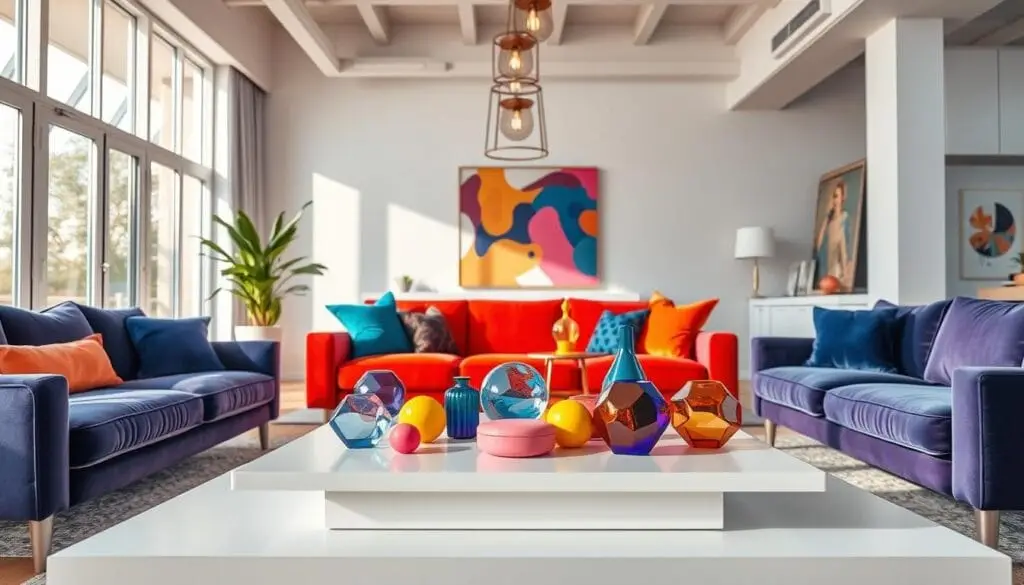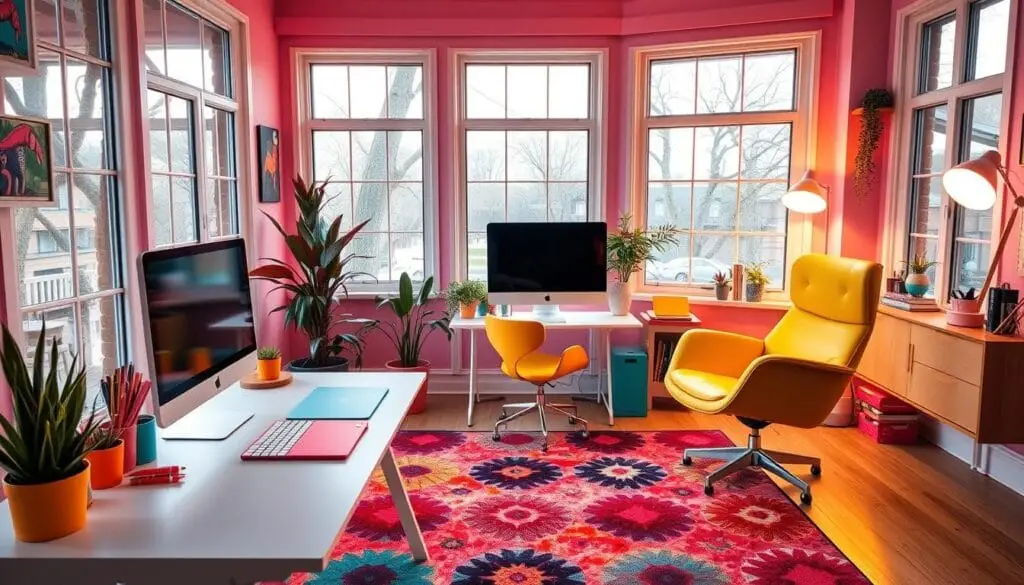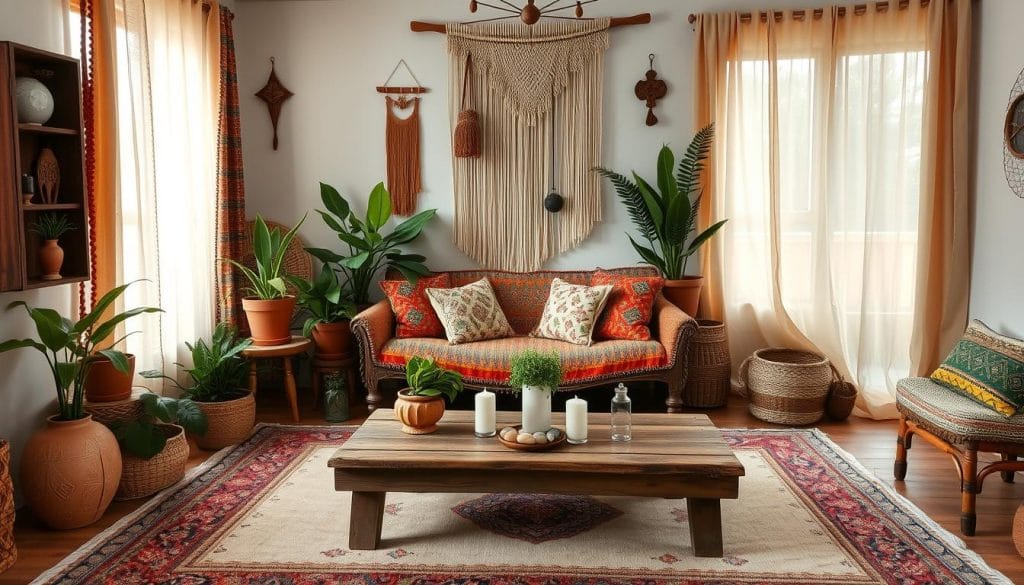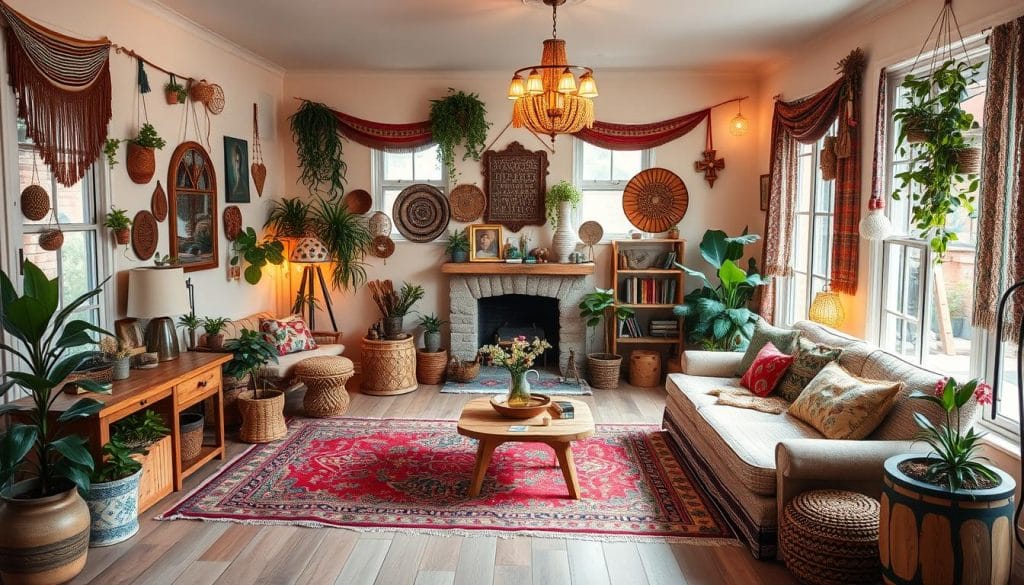Remember that rush of joy when you walk into a room that feels unapologetically you? Maybe it’s the way sunlight dances across your favorite rug or how that quirky thrifted lamp makes you grin. That’s the magic we’re diving into today—a design revolution that’s less about rules and more about what makes your heart skip a beat.
After years of sterile whites and muted grays, our homes are finally getting their personality back. Isfira Jensen, a leading interior designer, puts it perfectly: “We’re craving spaces that spark real delight, not just admiration.” This shift isn’t just about aesthetics—it’s a cultural reset. Millions on TikTok are proving that transform your home into a daily mood booster isn’t just possible, it’s essential.
What makes this trend stick? Science backs it. Our brains light up when surrounded by colors and textures that resonate personally. That sweater you can’t stop wearing? It’s the same principle. Your space should feel like a warm hug, not a museum exhibit.
We’ll show you how to break free from “shoulds” and create rooms that celebrate your unique story. Because true comfort lives where design meets delight—and we’re here to help you build exactly that.
Understanding the Science Behind Dopamine Decor
Have you ever wondered why certain rooms make you feel instantly uplifted? It’s not magic—it’s neuroscience. When we surround ourselves with visually stimulating elements, our brain releases a symphony of chemicals that elevate mood and energy levels.
Your Brain on Beautiful Spaces
Groundbreaking studies by neurobiologists Zeki and Ishizu reveal that viewing art we love activates the same orbitofrontal cortex regions as romantic attachment. As Ishizu notes:
“Aesthetic experiences aren’t just pleasant—they’re neurologically transformative.”
This reaction involves four key chemicals working together:
| Chemical | Role | Design Trigger |
|---|---|---|
| Dopamine | Anticipation & reward | Surprise color accents |
| Serotonin | Mood regulation | Familiar personal items |
| Oxytocin | Comfort & belonging | Soft textiles |
Sensory Supercharging
Oxford researchers found that vibrant environments enhance other senses—making fabrics feel softer and meals taste better. This cross-modal perception explains why a sunset-hued wall might make your morning coffee seem richer.
The takeaway? Designing for joy isn’t frivolous—it’s a science-backed strategy for daily well-being. By understanding these mechanisms, we can create spaces that work with our biology rather than against it.
Dopamine Decor in Trend Analysis: Social Media and Interior Design Insights
What happens when millions of people realize their homes could be daily mood boosters? Social platforms exploded with rainbow-hued living rooms and maximalist bedrooms this year—34 million posts and counting. This isn’t just pretty content—it’s proof we’re redefining what “home” means.

TikTok Trends and the Buzz Around Colorful Spaces
Remember when fashion influencers popularized “dopamine dressing”? That same energy now floods our feeds through vibrant interiors. TikTok’s algorithm favors authenticity, letting users share spaces that feel good—not just look polished. Joyce Huston from Decorilla explains:
“The pandemic taught us that sterile rooms drain energy. Now, we’re choosing personality over perfection.”
This shift isn’t fleeting. Searches for “colorful living rooms” tripled last year. Why? People crave environments that spark joy through personal expression—a ceramic collection here, neon throw pillows there.
The Shift from Neutral Minimalism to Emotionally Uplifting Environments
Gone are the days of all-white everything. 2024’s top trend? Rooms that tell your story through bold hues and tactile textures. It’s not about cluttering—it’s curating what makes you smile.
Designers note clients now prioritize emotional resonance over resale value. As one Reddit user posted: “My coral bookshelf doesn’t match my couch—and I don’t care!” That’s the spirit fueling this movement.
Social media gave us permission to break rules. The result? Homes that don’t just house us—they heal us.
Designing Your Home with Dopamine Decor
Ready to turn your house into a daily mood booster? Let’s start by rethinking how you interact with every corner. Interior expert Joyce Huston suggests beginning with a “joy audit”—a simple walkthrough where you note which items make you smile instinctively. These become your design anchors.

Implementing a Joy Audit: Personalizing Your Space
Grab a notebook and walk room-to-room. Does your grandmother’s quilt make your heart sing? Keep it visible. Do those beige curtains drain your energy? Time for a swap. This process helps identify what truly matters—not what decor rules dictate. As Huston explains: “Your space should reflect your story, not a catalog.”
Using Color, Texture, and Personal Artifacts to Enhance Mood
Color psychologist Ashley Banbury recommends strategic hues:
| Room Type | Recommended Color | Effect |
|---|---|---|
| Living Areas | Earthy Orange | Encourages conversation |
| Home Office | Muted Green | Boosts focus |
| Utility Spaces | Sunny Yellow | Adds cheer |
Don’t forget texture! Nancy Parrish suggests mixing velvet cushions with rattan baskets for tactile interest. Even your desk area can benefit from a vibrant mousepad or pastel organizers. The key? Balance bold statements with softer neutrals—try pairing a geometric-print armchair with cream walls.
Finally, look up! Painting ceilings with soft peach or mint adds surprise without clutter. Your home isn’t just where you live—it’s how you feel while living.
Conclusion
What if your home could be your happiest place every single day? This design movement proves it’s possible by blending science with self-expression. Forget trends—your space should hum with the colors, textures, and memories that make you feel alive.
Research shows joyful environments boost mental health naturally. That gallery wall of vacation photos? It’s not just decor—it’s brain-friendly fuel. And you don’t need a big budget. A citrus-hued throw pillow or clay vase from your last road trip can work wonders.
We love how this approach flips traditional rules. Your kitchen nook with mismatched chairs? Perfect. The rainbow bookshelf that “doesn’t match”? Brilliant. These choices celebrate your story, not some influencer’s brand aesthetic.
Remember: great design isn’t about perfection. It’s about creating rooms that spark grins when you walk in. So trust those instincts—your brain’s reward system already approves. Here’s to spaces that don’t just look good, but feel like home.



